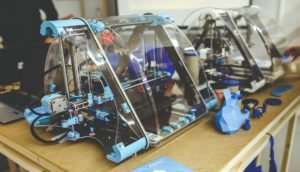Image source: avadirect.com
G-sync is a high-tech hardware tool used to increase the performance of gaming laptops and computer monitors by manipulating the display panel vertical blanking interval (VBI). It directly controls the output from the graphics card to match the video signals and eliminate screen tearing as well as reduce input lag.
Considering buying a gaming laptop or PC monitor? I suggest you look at the pros and cons of G sync and gain a better understanding of the high refresh rate before spending the extra cash on the monitor.
Pros:
1. Eliminate screen tearing: G-Sync tool eliminates tearing caused by inconsistencies in your GPU and the monitor or through adjusting the VSYNC.
2. Adjust monitor refresh rate: Monitors have fixed refresh rates while the graphics cards refresh rates depend on the image being rendered resulting in some problems. G-sync helps in adjusting the monitor’s refresh rate to match that of graphics cards.
3. Reduce input lag: G-sync uses 768MB of DDR3 memory to store each previous frame and compare it with the next frame thus reducing the input lag. It provides a minimal delay between the keyboard commands and on-screen game actions.
4. Premium quality: The gaming laptop has beautiful colors and the monitor have stutters making you have a smooth gaming experience.
5. Optimum visual experience: The high refresh rates make you achieve optimum visual performance.
6. Optimize battery life: Nvidia Optimus technology used in laptops helps in adjusting the graphics performance on the fly and also optimizes battery life.
7. G-sync HDR display: High dynamic range, HDR gives a brilliant performance similar to a human eye and comes in a variety of colors.
8. Provide ultimate image quality: G-sync display with HDR display provide intense brightness to ensure ultimate image quality. Gsync predicts the next frame and adjusts the display eliminating any artifacts or tearing.
9. Low latency: It has a refresh rate of 240 Hz with low latency giving an ultra-responsive gaming experience.
10. Stable games: When using G-sync, it makes the game feel more stable by providing ultra-low motion blur to give an enhanced viewing experience.
Cons:
1. Compatibility: For you to take advantage of the G-sync hardware tool, you need to have a powerful Gsync-enabled NVidia graphics card. GTX 10 series and GTX Titan Black are the newest NVidia cards you can use with G-Sync.
2. Nvidia Optimus technology: This technology relies on the integrated graphics system making it possible to buy an Optimus-capable device or a G-Sync-enabled device. There is no laptop in the market which comes with both technologies.
3. Large storage capacity: GSYNC hardware tool requires laptops with a high storage capacity and speed for the smooth running of the games.
4. G-sync requirements: G-Sync works in collaboration with GPU to provide desired refresh rate. Therefore, you must have a compatible GPU.
5. Cost: Compared to other types of laptops, Gsync monitors and gaming laptops come at an extra cost. You need to buy a powerful monitor and graphics card which are very expensive.
6. Addicted: Once you start using Gsync, you can’t go back. You will find it very difficult to use any other type of monitor or laptop because you’re used to great performance laptops with great output.
7. Delays: During the vertical blanking interval, there is no screen refresh data is sent to the monitor. This causes some delays as the graphics card has to wait until the display is ready to receive the next frame.
8. Suitable for intense players: If you’re a light or casual game player, G-sync will not give you feasible benefits. The technology is designed to help intense game players.
9. Nvidia G-sync module: G-sync only supports Display-port monitors with basic features. It doesn’t support audio output.
10. Upgrade: You need additional hardware to pair with the graphics card and the monitor for the G-Sync to function well.




Just came across your blog post today. I might admire your efforts for writing this excellent article. Reading such content enriches my current knowledge base. Thank you for that. Well, I will share your article on my social media. Keep sharing.